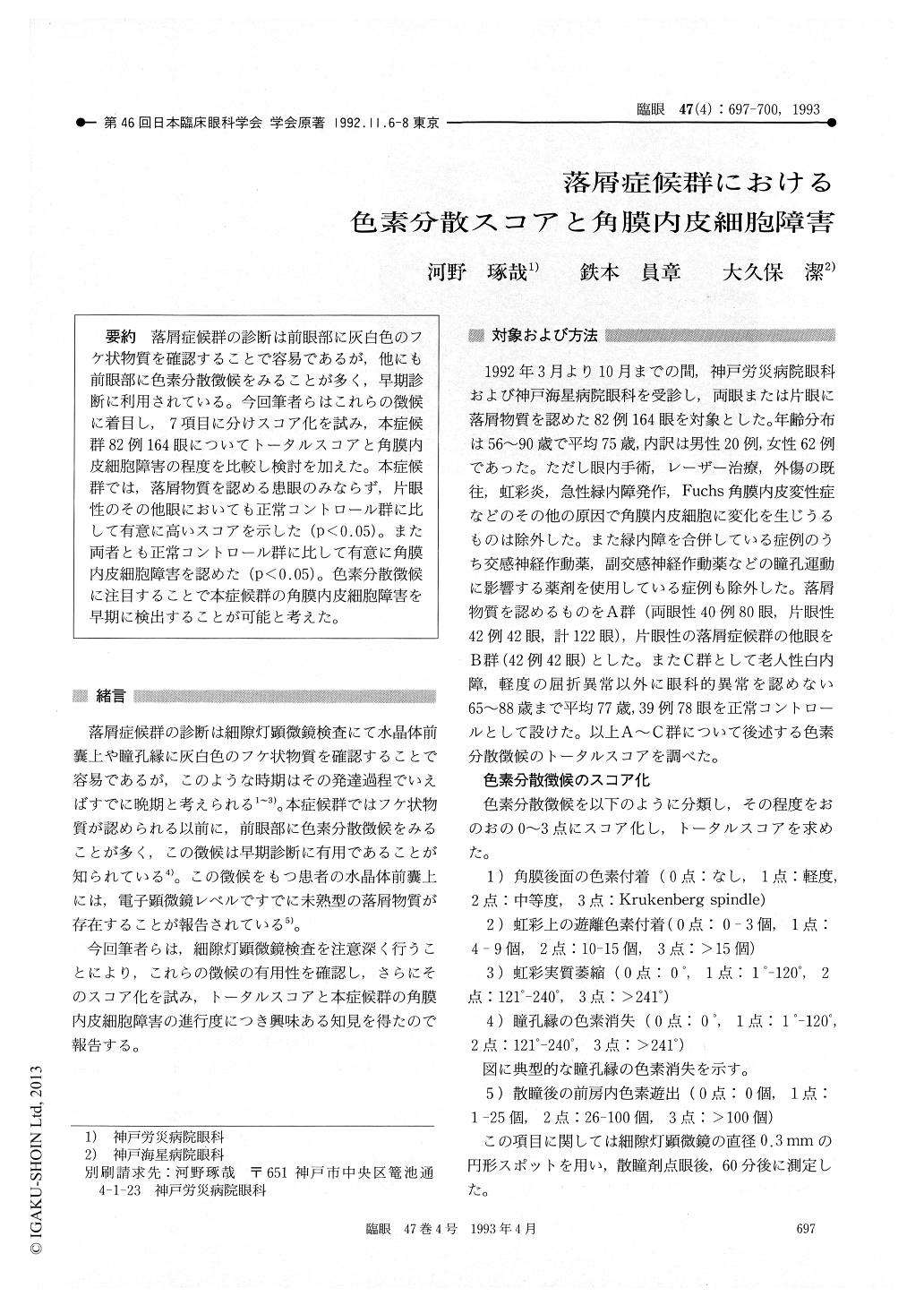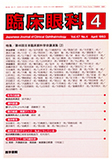Japanese
English
- 有料閲覧
- Abstract 文献概要
- 1ページ目 Look Inside
落屑症候群の診断は前眼部に灰白色のフケ物質を確認することで容易であるが,他にも前眼部に色素分散徴候をみることが多く,早期診断に利用されている。今回筆者らはこれらの徴候に着目し,7項目に分けスコア化を試み,本症候群82例164眼についてトータルスコアと角膜内皮細胞障害の程度を比較し検討を加えた。本症候群では,落屑物質を認める患眼のみならず,片眼性のその他眼においても正常コントロール群に比して有意に高いスコアを示した(p<0.05)。また両者とも正常コントロール群に比して有意に角膜内皮細胞障害を認めた(p<0.05)。色素分散徴候に注目することで本症候群の角膜内皮細胞障害を早期に検出することが可能と考えた。
Pigment dispersion is one of cardinal signs of exfoliation syndrome. We scored the pigment dis-persion by classifying into 7 categories: retrocor-neal pigment, pigment deposit on iris surface, iris transillumination, iris stromal atrophy, pupillary ruff defect, pigment dispersion after mydriasis, pigment particles on the lens, pigment deposit on the trabecular meshwork. We evaluated 164 eyes with exfoliation syndrome regarding the above score and the severity of corneal endothelial dam-age. This was true both in the case of bilaterally affected eyes and in the unaffected fellow eye of unilateral cases, indicating severer damage of cor-neal endothelium (p<0.05). Corneal endothelial damage was more frequent in affected eyes than in normal ones (p<0.05). Pigment dispersion seemed to be indicative of endothelial damage in this syn-drome.

Copyright © 1993, Igaku-Shoin Ltd. All rights reserved.


